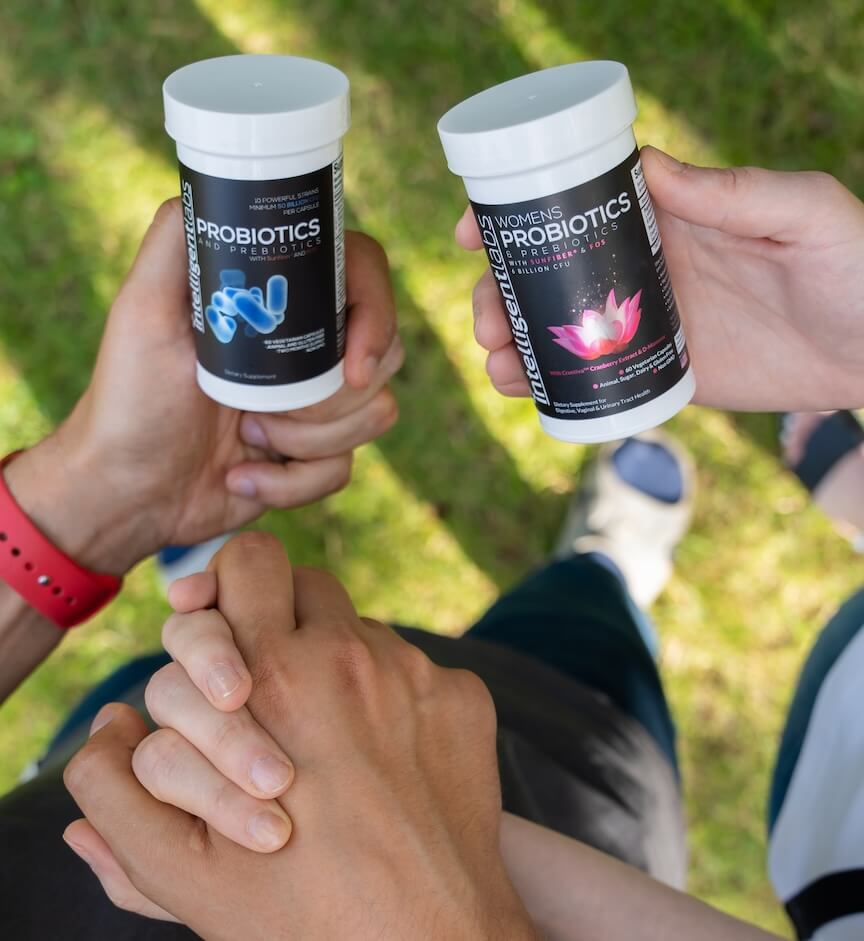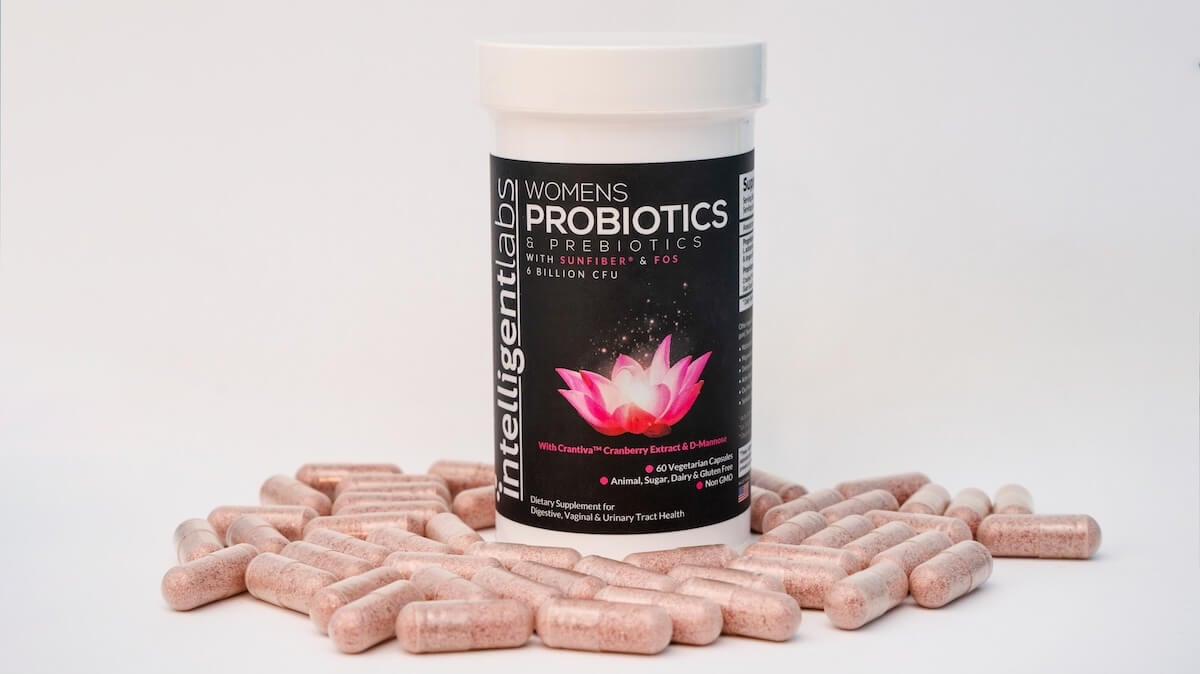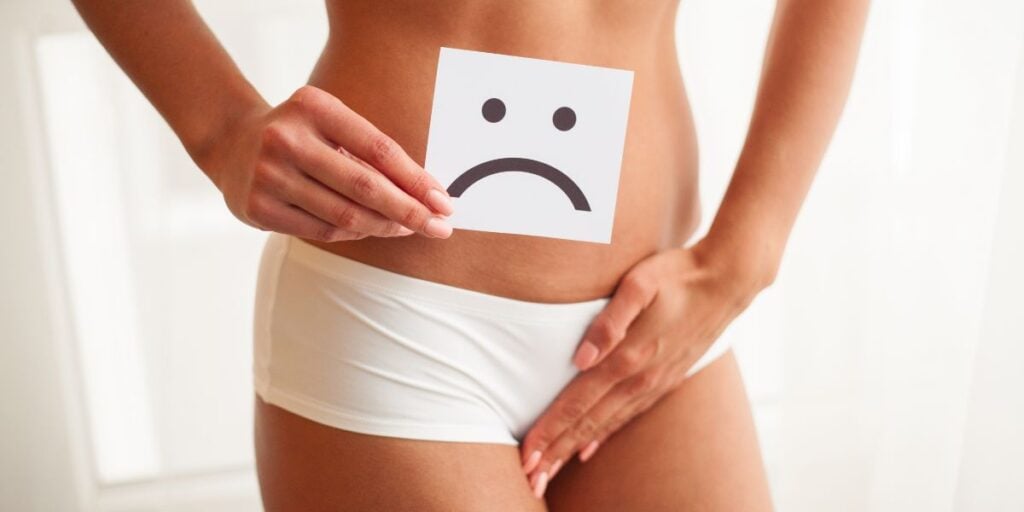Probiotics
How To Get Rid of Bacterial Vaginosis (BV) Without Antibiotics
Antibiotics work pretty well against bacterial vaginosis (BV), but they’re also a double-edged sword. They’ll kill the good bacteria along with bad ones, which can do even more harm. In this blog post, we’ll see if there’s a way to get rid of BV without antibiotics. We’ll find out if home remedies for BV work, including using probiotics like our Women’s Probiotics & Prebiotics.
Word of caution, though, before we start. Please seek medical advice if you intend to try out any of our suggested remedies below.
Table of Contents
What is bacterial vaginosis?
Bacterial vaginosis occurs when “bad” bacteria overrun the “good” bacteria in a woman’s vaginal flora. Examples of “bad” species include Gardnerella vaginalis and Atopobium vaginae.1 Other “bad” species exist, but they’re two of the most detected strains found in BV-positive women.
On the other hand, the most dominant “good” bacteria in the vagina belong to the Lactobacillus genus (we also use Lactobacillus strains in all of our Probiotics products). Large populations of Lactobacillus strains are positively associated with vaginal health.2
How to get rid of BV without antibiotics?
There are a number of options to treat BV that do not involve the use of antibiotics:
1) Supplement with high-quality probiotics
Probiotics are live cultures of “good” bacteria. By supplementing with probiotics, you are helping to increase the number of good bacteria in your vaginal flora and keeping the harmful bacteria under control. This helps restore balance in your vagina.
As mentioned earlier, however, the Lactobacillus strains are good bacteria. As such, it is important to choose probiotics that contain Lactobacillus strains.
We offer two different probiotics products that may help treat BV:
Women’s Probiotics & Prebiotics
Our Women’s Probiotics include 4 patented probiotic strains, namely, L. acidophilus La-14® and 3 other Bifidobacterium strains. Each capsule contains at least 6 Billion CFU of these “good” bacteria to help restore balance to your vaginal flora.

For optimal feminine health, we also add a proprietary blend of Crantiva® Cranberry Juice Powder, D-Mannose, and two types of prebiotic fibers.
Our Adult Probiotics include 10 patented strains, specifically, 6 Lactobacillus strains and 4 Bifidobacterium strains. Each capsule contains at least 50 Billion CFU of these “good” bacteria. We also add two types of prebiotic fibers to each capsule to ensure that the bacteria don’t go hungry if they “wake up” before they make it to your gut!
For both products, we use delayed-release capsules and active packaging technology to help ensure the probiotics survive until the expiration date. The shelf life for our probiotics products is two years when stored in a cool, dry place (no refrigeration needed).
Moreover, our probiotics are made in an NSF, GMP-certified facility in the USA and have been third-party tested to ensure purity and potency!
2) Probiotics-rich diet
A diet rich in probiotics may also help treat BV. Probiotic-rich foods include yogurt, tempeh, miso, kimchi, sauerkraut, cheese, sourdough, and pickles.
Additionally, foods naturally rich in prebiotics or fiber help support probiotics. They include bananas, garlic, onions, dandelion greens, Jerusalem artichokes, chicory root, oats, leeks, and asparagus.
Related article: The Truth Behind The Best Probiotic Yogurt
3) Fermented drinks
Yes, some drinks naturally contain good bacteria. Examples are fermented drinks, such as kombucha, kefir, and fermented ginger ale. Kombucha involves adding bacteria and yeast to tea. Kefir is simply a fermented milk drink. There are also plenty of recipes online for fermented probiotic drinks. Feel free to DIY and concoct your own fermented drinks for maximum fun and flavor!
4) Boric acid suppositories
This one does not go in your mouth. Instead, it’s inserted into your vagina. Boric acid is the refined and processed form of borax, a compound used as a household cleaner and pesticide. It’s also used in some cosmetic products and toothpaste.
While there have been reports of moderate vaginal irritation, anecdotal evidence point to boric acid suppositories as a safe and effective way to treat BV without antibiotics.3
Is bacterial vaginosis an STD?
No, bacterial vaginosis isn’t a sexually transmitted disease (STD), although having BV can make you more susceptible to catching STDs. It’s also different from a yeast infection, typically brought on by a yeast known as Candida.
Is bacterial vaginosis the same as UTI (urinary tract infection)?
No, they’re not, although bacteria cause both. BV is an infection in the vagina, while UTI is an infection of the urinary tract. The urinary tract goes from the urethra, bladder, ureters, and the kidneys.
Who can get bacterial vaginosis?
Anyone with a vagina can get BV, even non-sexually active females. But the most common age group affected by BV belongs to the 15-44 age range.4
How do you know you have BV? What are the signs and symptoms?
Probably the number one telltale sign of BV is a foul, fishy odor coming from a woman’s nether regions. Now, it’s normal for a vagina to emit a mild and musky scent. But any strong and unpleasant odors may indicate something fishy is going on down there.
Another thing to note is the differences in vaginal discharges. They are ordinary for a healthy woman, but a woman with BV may have a thin, yellowish or grayish discharge. Pain, itching, and a burning sensation when peeing are also symptoms of BV.
Interestingly, however, up to 84% of women with BV have reported no symptoms.5 Moreover, some symptoms are similar to other vaginal issues, such as vaginitis and candidiasis. So, the best way to get a definitive diagnosis is to test vaginal fluids for infection.

Why are antibiotics NOT the best option to treat BV?
As mentioned in the introduction, antibiotics work really well at killing bacteria. However, it doesn’t differentiate between friend or foe. Antibiotics obliterate all types of bacteria – both good and bad.
Another concern about using antibiotics to treat BV is the possible side effects. For example, in a literature review that studied over 4,400 non-pregnant women with BV, the antibiotic metronidazole caused vomiting, nausea, and metallic taste.
Also, the misuse and overuse of antibiotics can lead to antibiotic resistance. This is particularly worrying for those who can easily buy antibiotics over the counter and attempt to self-treat their BV infection.
Antibiotic resistance means the bacteria will no longer respond to treatment, allowing them to multiply uncontrollably. They can then lead to recurring infections and significantly cause more harm as well as run up costly medical bills! Unfortunately, antibiotic resistance is now a serious global problem.6
Lastly, while allergic reactions to antibiotics aren’t very common, they do occur. For such women, the next thing to do would be to figure out how to get rid of BV without antibiotics (see the previous section for suggestions).
What are the causes and risk factors for BV (to help prevent infection)?
Anything that can affect the fragile balance in a woman’s vaginal flora can increase the risk for BV. These may include:
Poor vaginal and sexual hygiene
The vagina is a self-cleaning organ, but it can still benefit from good hygiene practices. For instance, when wiping after using the toilet, wipe from front to back and not the other way around.
Also, avoid vaginal douching as it can increase your infection risk. It can also cause dryness, irritation, and even a burning sensation in the area.7
Moreover, anything that goes in contact with your vagina should be clean. This includes underwear and clothing, fingers, your partner’s sex organ, sex toys, etc. They’re all potential carriers of harmful bacteria, so it’s important to ensure cleanliness at all times!
Smoking
Cigarette smoking can increase a woman’s risk of getting BV. Smokers typically have low levels of Lactobacillus bacteria in their vaginal flora, making them more prone to infections.8
History of infection
Unfortunately, up to 80% of women who’s had BV will experience a recurrence.9 This may result from inadequate treatment the first time around, e.g. bad bacteria was killed off but the root cause wasn’t addressed. So, for example, if you keep on smoking or you’re not particularly concerned about cleanliness down there, then chances are, the infection will come back again!
Final thoughts
Getting rid of BV without antibiotics is possible with the use of probiotics supplements such as our Women’s Probiotics and Adult Probiotics. Consuming probiotic-rich food and drinks may also help restore balance to the vaginal flora. Remember though that prevention is still better than cure, so always ensure cleanliness in your feminine area!
💬 Something on your mind? Share your thoughts in the comments. We love hearing from curious minds.
📩 And while you’re here, join our newsletter for more smart stuff (and secret perks)!
References
- The Human Vaginal Bacterial Biota and Bacterial Vaginosis, Sujatha Srinivasan and David N. Fredricks, Published16 Feb 2009 ↩︎
- Shi, L., Wang, H., & Lu, Z. (2016). Staphylococcal Infection and Infertility. InTech. ↩︎
- Clinicians’ use of Intravaginal Boric Acid Maintenance Therapy for Recurrent Vulvovaginal Candidiasis and Bacterial Vaginosis, Anna Powell, Khalil G. Ghanem, Sex Transm Dis. 2019 Dec; 46(12): 810–812. ↩︎
- Bacterial Vaginosis (BV) Fact Sheet, from: https://www.cdc.gov/std/bv/stdfact-bacterial-vaginosis.htm ↩︎
- Bacterial Vaginosis (BV) Statistics, from: https://www.cdc.gov/std/bv/stats.htm ↩︎
- Antibiotic resistance, taken from: https://www.who.int/news-room/fact-sheets/detail/antibiotic-resistance ↩︎
- Effect of vaginal douching on vaginal flora and genital infection, Rasime Yıldırım, Gülşen Vural and Esra Koçoğlu, J Turk Ger Gynecol Assoc. 2020 Mar; 21(1): 29–34. ↩︎
- Nelson, T.M., Borgogna, J.C., Michalek, R.D. et al. Cigarette smoking is associated with an altered vaginal tract metabolomic profile. Sci Rep 8, 852 (2018). ↩︎
- Kairys N, Garg M. Bacterial Vaginosis. [Updated 2023 Jul 4]. In: StatPearls [Internet]. Treasure Island (FL): StatPearls Publishing; 2023 Jan. ↩︎




